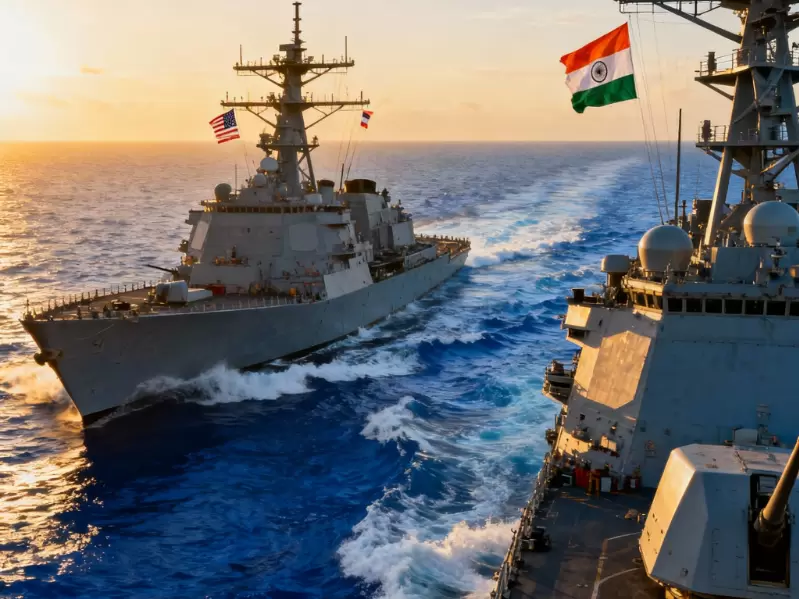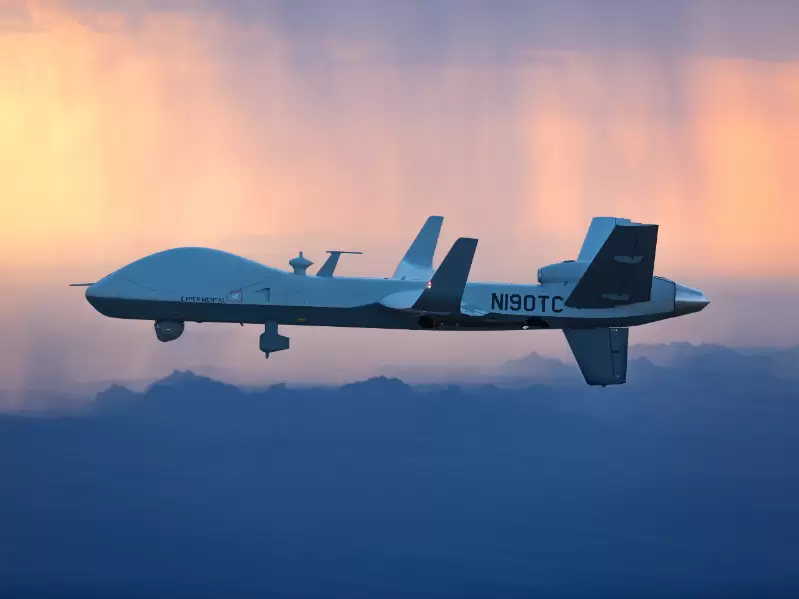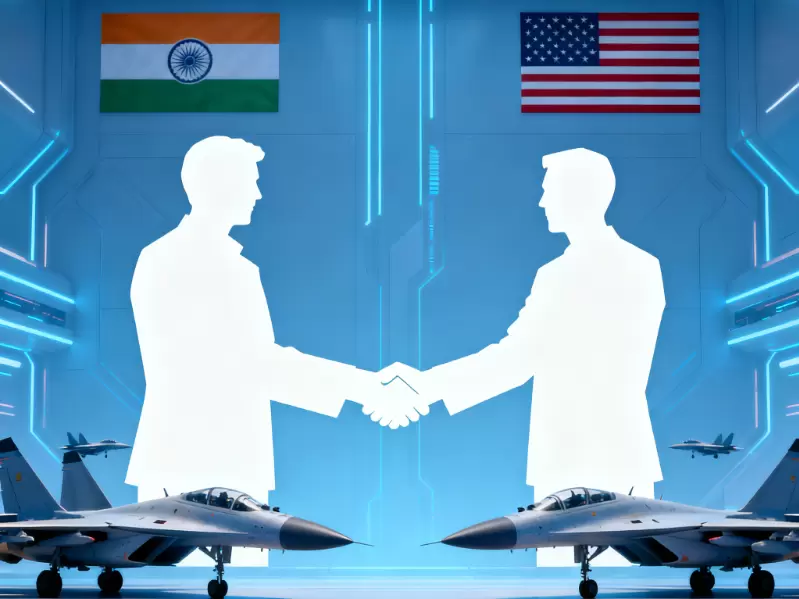India–U.S. defense relationship: The maritime dimension
The backbone of India–U.S. maritime relations lies in interoperability, the ability to operate together, exchange logistics, and maintain shared situational awareness.
 Representative Image / Generated using AI
Representative Image / Generated using AI
In an era defined by Indo-Pacific realignments, the India–United States defense relationship has acquired a distinctly maritime character. What began as a transactional, buyer-seller relationship has matured into a multidimensional partnership built on shared strategic interests, industrial collaboration, and operational interoperability.
For India, closer naval cooperation with the United States enhances force modernization, provides access to technology, and provides intelligence, surveillance, and reconnaissance inputs to improve maritime domain awareness across the Indian Ocean Region (IOR). For Washington, India is a pivotal democratic maritime power anchoring the vision of a free, open, and inclusive Indo-Pacific, as well as the only repair, refit, and refit center for the United States Navy and Coast Guard.
Interoperability and Exercises
The backbone of India–U.S. maritime relations lies in interoperability, the ability to operate together, exchange logistics, and maintain shared situational awareness. Foundational agreements such as LEMOA (2016), COMCASA (2018), and BECA (2020) now permit logistics support, secure communications, and geospatial data exchange between the two navies.
Exercises such as MALABAR, TIGER TRIUMPH, and RIMPAC have institutionalized this operational synergy. The 2025 iteration of Tiger Triumph involved joint amphibious landings, cross-deck helicopter operations, and humanitarian assistance drills—an indicator of trust at the tactical level. Similarly, bilateral drills between INS Imphal and USS Gridley in the Arabian Sea earlier this year demonstrated interoperability of data links and integrated maritime interdiction operations.
Through these engagements, the Indian Navy has developed a common operating language with the US Navy, encompassing everything from anti-submarine warfare to humanitarian response. This level of confidence represents a major evolution from the limited exchanges of the early 2000s.
Equipment and Capability Integration
In 2007, the USS Trenton was transferred to the Indian Navy in a Government-to-Government deal. Renamed INS Jalashwa, it rendered sterling service evacuating Indians from Libya and was a core element of the Samudra Sethu operations during COVID.
Ever since, hardware integration continues to anchor cooperation. India now operates 12 Boeing P-8I Poseidon maritime patrol aircraft, together with its weapons and sensor suite, and MH-60R Seahawk helicopters. Beginning with an initial lease of 2 Sea Guardian Drones, the two governments finalized the procurement of 31 MQ-9B Sky/Sea Guardian Drones, of which 12 would be for the Indian Navy’s requirements—a critical enabler of surveillance and anti-submarine warfare.
The partnership is also shifting from acquisition to information fusion. Under the Maritime Domain Awareness (MDA) initiative, India accesses US-origin vessel-tracking and ocean surveillance data through the SeaVision platform, while joint work on sonobuoys and autonomous surface vehicles supports indigenous production.
Industrial Collaboration
India’s maritime modernization is now entering a decisive phase, underpinned by the revival of the Landing Platform Dock (LPD) program to construct four 40,000-ton LPDs, valued at roughly ₹80,000 crore. For India, such vessels are indispensable for protecting its far-flung island territories in the Andaman & Nicobar and Lakshadweep island chains, and for enabling rapid humanitarian response to crises in the Indian Ocean.
For the United States, India’s growing amphibious capability enhances the collective capacity of Indo-Pacific democracies to secure regional sea lanes. American shipbuilders—long-experienced in amphibious and logistics platforms — could be potential collaborators for a clean-sheet Indian LPD or even collaborate on subsystem design, automation, and maintenance frameworks.
On another note, the Indian Navy’s Twin-Engine Deck-Based fighter aircraft to replace the MiG-29 K fighters could see collaboration with General Electric on aircraft engines and systems, which would be manufactured in India. India is already part of the global supply chain for aero-structures for the Chinook and Apache helicopters and the C-130 transport aircraft.
The broader implication is clear: the maritime sector could become the next locus of defense-industrial interdependence between the two countries.
Challenges and Considerations
Despite clear strategic logic, several challenges persist.
Strategic autonomy: India continues to balance relationships with France, Israel, Japan, and Russia. Deepening cooperation with the U.S. must preserve decision-making independence.
Technology-transfer conditions: U.S. systems are often governed by strict end-use clauses; India will need negotiated flexibility for maintenance and limited exports.
Industrial readiness: Indian shipyards must expand capacity and quality-assurance systems to handle vessels of this scale.
Geopolitical sensitivities: Beijing closely tracks India–US naval collaboration in the eastern Indian Ocean, including in the Andaman Sea and Malacca Strait—areas critical to China’s sea-lane security.
Conclusion: Anchoring a Maritime Century
The maritime dimension of the India–U.S. defense partnership is evolving from cooperation to co-creation. From shared operations and exercises to the prospective joint development of complex warships, the partnership now encompasses strategy, industry, and technology. Both countries have plenty to gain, and multi-track dialogues may provide a pathway for partnership.
The author retired as India’s Principal Director Naval Plans and currently serves as founder and secretary of the Society for Aerospace Maritime and Defence Studies (SAMDeS)
(The views and opinions expressed in this article are those of the author and do not necessarily reflect the official policy or position of New India Abroad)
ADVERTISEMENT
ADVERTISEMENT
E Paper
Video



 Commodore Sujeet Samaddar, NM (Retd)
Commodore Sujeet Samaddar, NM (Retd)














Comments
Start the conversation
Become a member of New India Abroad to start commenting.
Sign Up Now
Already have an account? Login